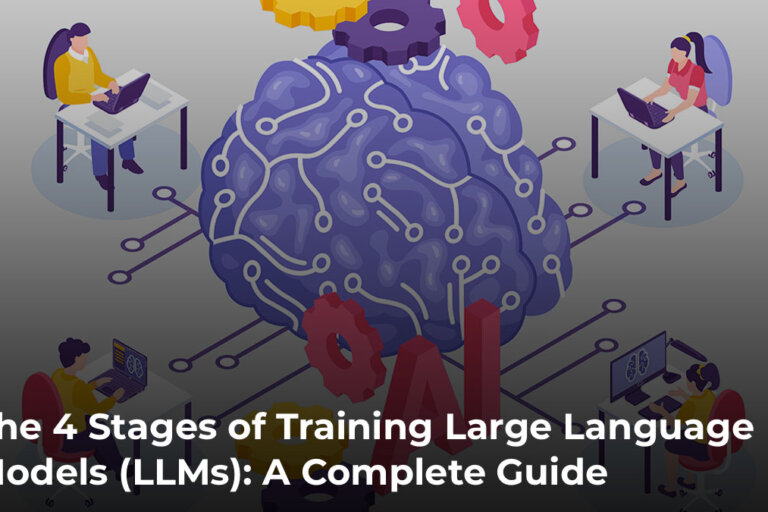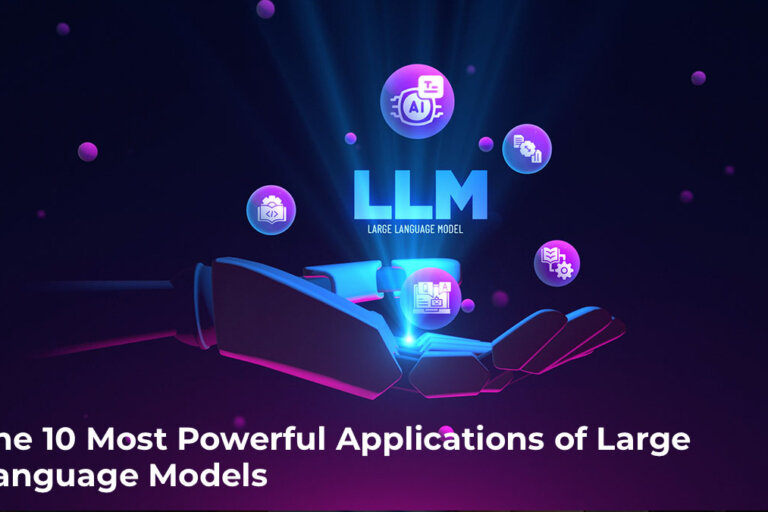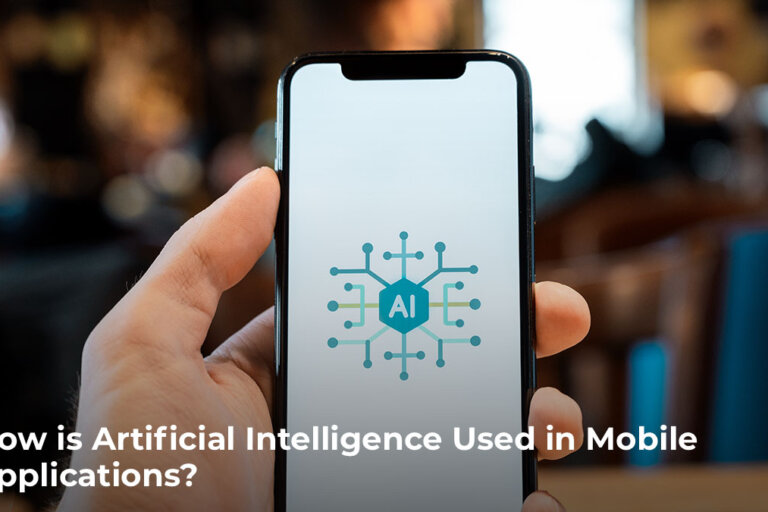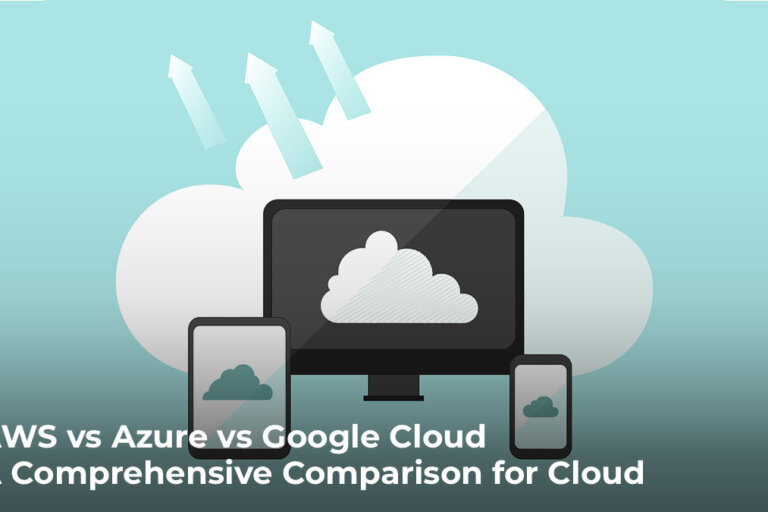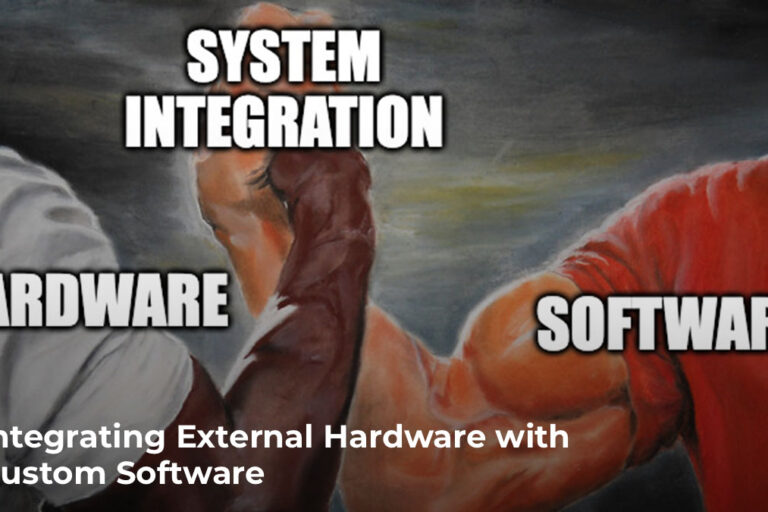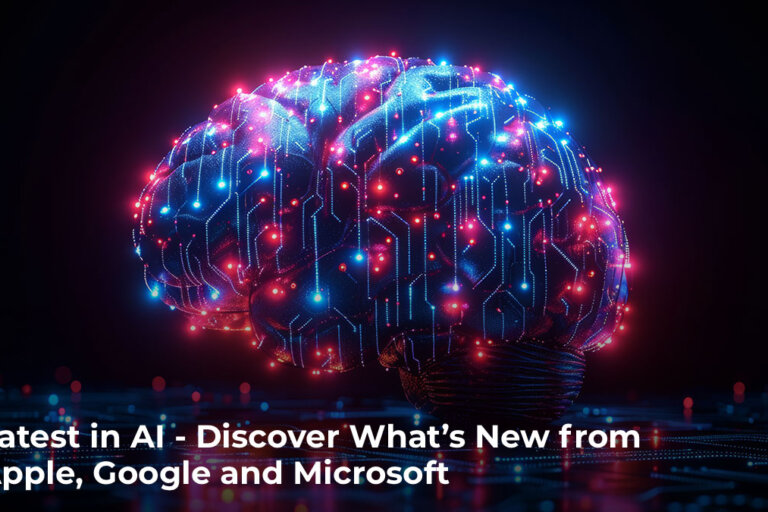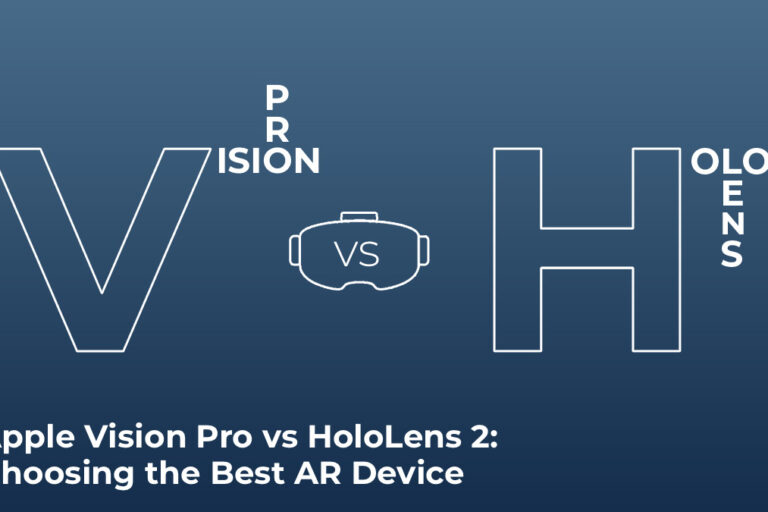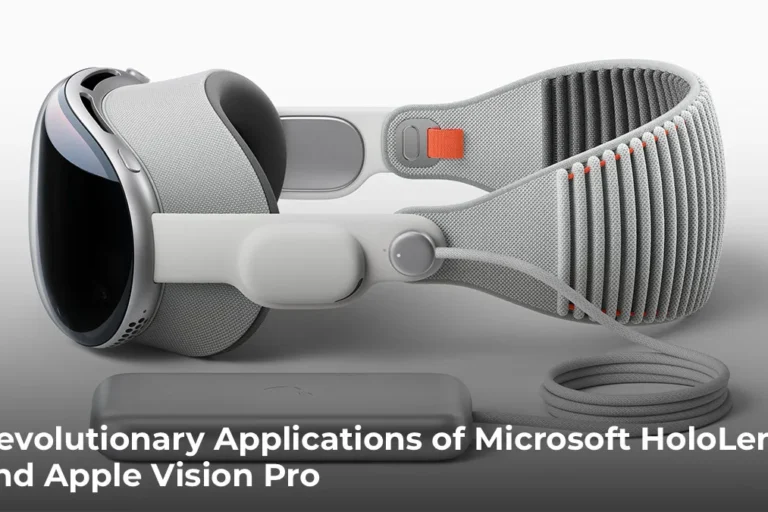Apple Vision Pro vs HoloLens 2: Choosing the Best AR Device
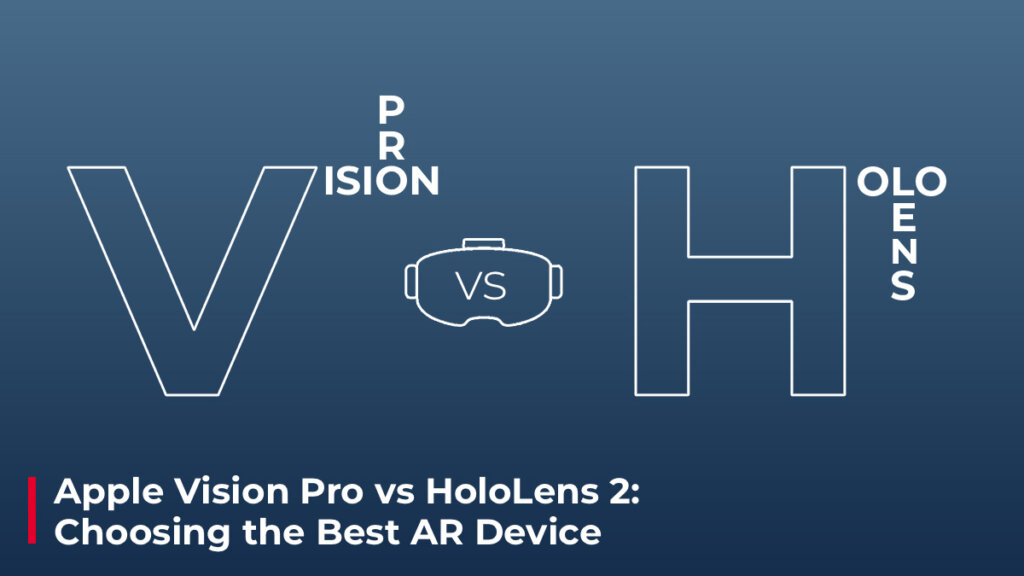
Imagine a world where you can overlay digital images and information onto your everyday surroundings. You can navigate your favorite apps, enjoy movies, and play with holograms all around you by simply tapping on things in space without even looking down at a screen.
Exciting, right?
Yes, with immersive technologies like Augmented Reality (AR) and Mixed Reality, what once seemed to be futuristic is now our reality. These technologies are transforming how we live, work, and interact by making interactions incredibly seamless.
In this blog, we bring to you a comprehensive comparison of two leading AR devices: Apple Vision Pro and Microsoft HoloLens 2. These devices are not just gadgets; they are gateways to new experiences and possibilities.
Discover what sets Apple Vision Pro apart from Microsoft HoloLens.
A Brief History of Apple Vision Pro and Microsoft HoloLens

Microsoft HoloLens
Microsoft made waves in the tech world in January 2016 when they unveiled the HoloLens, one of the first true mixed reality (MR) headsets. This amazing device runs on a holographic-specific OS and is part of Microsoft’s larger mixed reality (MR) platform that primarily focuses on enterprise use cases to create a perfect blend of real and digital worlds.
HoloLens has an interesting backstory! It all started with Kinect, an Xbox accessory with sensors to detect depth and people in the surroundings. Alex Kipman, the brain behind Kinect, began using its technology in 2010 to develop a cool head-mounted holographic computer. At first, it was called Project Baraboo, but now, you might know it better as HoloLens.
Now, let’s uncover the features-
The HoloLens is a head-mounted device that features a self-contained, untethered design with a see-through holographic display that utilizes a combination of cameras, depth sensors, and an optical projection system to create a truly realistic AR experience. However, despite these immersive features, some users felt it was a bit too heavy and not as immersive as they hoped. Plus, wearing it for extended periods could even induce a hint of dizziness. So, despite its futuristic vibe, the HoloLens didn’t exactly become an overnight sensation.
However, Microsoft didn’t stop there. Over the years, they have diligently refined the HoloLens, leading to the release of the HoloLens 2 in 2019. The latest version offers a full-fledged mixed reality computer experience right on your face from the get-go. And Kipman, the mastermind behind HoloLens, summed it up in an interview, saying you can expect “comfort, immersion and out-of-box value” from the new HoloLens 2.
The updated HoloLens, priced at $3500, is like the deluxe version with all the bells and whistles. It has improved ergonomics, a 52-degree diagonal field of view, a 2K display for each eye, and top-notch hand-tracking capabilities powered by an advanced AI processing unit. In addition, it can seamlessly connect to Microsoft Azure as well, what more could you possibly ask for? It’s like they’ve packed all the coolest tech into one sleek device.
With these upgrades, the HoloLens 2 has become an even more powerful tool for enterprise users and even remote workers, enabling sophisticated spatial mapping and a deeper sense of presence within the augmented environment.

Apple Vision Pro
While Microsoft was pioneering AR with HoloLens, Apple was quietly investing in AR technology behind the scenes. The big reveal came at the Worldwide Developers Conference (WWDC) in June 2023, where Apple introduced the Vision Pro, its very first spatial computer.
Using Apple’s mastery in hardware and software, Apple Vision Pro, although a relatively new entrant in the AR arena, promises a smooth, real-time experience that’s second to none. You can step into a whole new world of spatial computing, seamlessly integrating with all your other Apple devices.
Apple’s journey into AR began years before the Vision Pro with ARKit in 2017. ARKit allowed developers to create AR experiences for iPhones and iPads, setting the stage for the more advanced Vision Pro. It’s all about that strategic progression: start with software, refine the technology, and then roll out the hardware.
Now, about the features- Apple Vision Pro is equipped with Vision OS, the first-ever adaptive spatial operating system. It takes spatial computing to a whole new level by surpassing the traditional displays, and blending the digital content with your surroundings. It comes with a flexible three-dimensional user interface with a dual-chip design that responds effortlessly to your gestures, voice commands, and eye movements.
But, that’s not all. The Vision Pro transforms app interactions, offering control over the level of immersiveness through an infinite, scalable canvas.
And the visuals? Vision Pro sports two ultra-high-resolution micro-OLED displays, an advanced spatial audio system, and audio ray tracing sensors—all combining to deliver a lineup of immersive experiences that can transport you to entirely new places. And, with support for the Magic Keyboard and Magic Trackpad, you can turn any space into a perfect workspace. Plus, you can wirelessly integrate your Mac into Vision Pro, creating a massive, portable 4K display with incredibly crisp content.
Thus, unlike HoloLens 2, which is ideal for industry-specific applications, Apple Vision Pro is versatile enough for everyone—developers, enthusiasts, or anyone who wants an immersive AR experience.
Now that we’ve explored their evolution, let’s dive into how these devices are being used today.
Use Cases and Apps for Apple Vision Pro and Microsoft HoloLens
Use Cases of Apple Vision Pro
Apple Vision Pro does not limit itself to mere entertainment with movies and 3D immersive games, but it has been tailored for commercial applications, offering more use cases across various arenas that no one could have ever imagined.
Here are a few noteworthy use cases and their example apps:
Entertainment and Media Consumption – Vision Pro allows users to play interactive 3D games, watch movies, TV shows, and even videos taken in iPhones. With high-definition visuals and spatial audio, it feels so lifelike, as if everything is happening right in front of you.
Crunchyroll on Apple Vision Pro immerses anime fans in over 1,300 series and simulcast shows. Similarly, you can personalize your theater experience with IMAX. With lifelike visuals and spatial audio, experience your favorite shows come to life right before your eyes.
Work and Collaboration – With life-size tiles, spatial audio, and real-time digital avatars, Apple Vision Pro makes the perfect field environment for Facetime, immersive training, and dynamic team collaborations. From 3D design to remote data analysis, its ability to project high-resolution floating screens facilitates multitasking, remote assistance and visual collaboration on even very complex tasks.
With apps like SAP Analytics Cloud, Notion, Zoom and Microsoft Office Suit and Copilot, you can boost your team’s productivity like never before, with spatial computing.
Productivity -Office workers can create a virtual multi-monitor setup, enhancing their workspace without the need for physical monitors. Remote collaboration has been taken to the next level with virtual meeting rooms where participants can interact with shared documents and 3D models as if they were in the same physical space. This can boost productivity by providing a customizable and innovative workspace.
Using notable apps like Adobe Lightroom and Adobe Firefly, users can leverage creative tools and AI to shape their ideas, edit workflows, and collaborate seamlessly on visual projects.
Education- Numerous learning scenarios can be transformed into an engaging experience with Apple Vision Pro. For example, medical trainees or engineering students can gain confidence through hands-on practice with complex equipment. Meanwhile, tutors can deliver life-like demos via teleconferencing, allowing students to overcome geographical barriers and learn from anywhere.
Insight Heart app is an amazing application that utilizes Vision Pro’s immersive capabilities to provide a detailed, 3D visualization of a beating human heart in real-time. Users can explore the heart’s anatomy with simple gestures, observe how it functions, and understand various conditions and their effects. This not only enhances medical education but also allows fitness enthusiasts to gain a deeper understanding of cardiovascular health, making their fitness routines more informed and effective.
Now, let’s take a closer look at the top use cases of HoloLens 2.
Use Cases of HoloLens2
Field Work: Compared to HoloLens, field workers in safety-controlled environments are finding more productive applications with HoloLens 2. In fact, when powered with Trimble XR10, users can effortlessly use the Hardhat and witness a visible boost in productivity and accuracy.
BIM Holoview streamlines the construction works by overlaying the BIM (Building Information Modelling) model of any site in AR. It allows developers and construction engineers to get a rundown through the structure and spatial dynamics before it is actually built.
Industrial Engineering:
HoloLens 2 Industrial Edition is built for any environment with clean room and safety certificates. It provides specialized workers with real-time technical help from experts, reducing the need for on-site visits and saving businesses significant overhead costs.
Holo Maintenance, backed with Microsoft Azure services, offers remote assistance to workers anywhere with a flexible monitoring environment that reduces downtime and provides repair services instantly.
Digital Marketing and Creative Design:
HoloLens 2 is finding wide-scale usability in branding and promotional designs by offering a mixed reality experience. From brief product demos to intricate problem-solving content, marketers can create a direct impact on users’ buying behavior.
Holo Property is slowly gaining pace as the top tool to simplify marketing efforts and deliver a seamless shopping experience to consumers.
Training and Education:
Similar to Apple Vision Pro, HoloLens 2 has been creating waves in the education sector with 3D holographic content that can be placed anywhere in the real world to help students or remote workers understand complex concepts in an efficient way possible.
CAD Models HoloLens offers thousands of 2D and 3D models for students to explore from every angle. They can interact with core components and simulate real-world scenarios, leading to more engaging and effective learning experiences.
Check out our blog to explore other revolutionary applications of Microsoft HoloLens and Apple Vision Pro.
Developing for AR Platforms: What Is It Like?

Developing for Apple Vision Pro and HoloLens 2 offers unique experiences to developers, each presenting its own set of tools, challenges, and opportunities.
Developing for Apple Vision Pro
Apple Vision Pro is bringing in a whole lot of enhancements and a familiar yet flexible development environment with VisionOS SDK. This means, developers can bring out the creativity in them and create gaming and app experiences that are far more realistic.
The primary development environment is Xcode, using SwiftUI, RealityKit, and ARKit.
Xcode provides comprehensive tools for software development, including project management, code and UI editors, debugging tools, device simulators, performance assessment tools, and a full set of system code modules (frameworks). While RealityKit simplifies creating immersive AR experiences with high-fidelity graphics.
Also, VisionOS integrates seamlessly with iOS, allowing developers to transition their existing apps into the AR space easily. The key benefits include:
High-Quality Graphics: Advanced rendering capabilities for stunning visuals and 3D content.
Developer Tools: Extensive libraries and frameworks for easy AR content creation.
Ecosystem Integration: Smooth interoperability with other Apple devices.
Developing for Microsoft HoloLens
To explore the expanded features of HoloLens 2, integrated development environments (IDE) like Unity and the Mixed Reality Toolkit (MRTK) are used. Unity offers a flexible platform for developing detailed 3D environments, while MRTK provides essential tools and components for mixed reality development. The benefits include:
Windows Mixed Reality: HoloLens 2 OS supports advanced features like spatial mapping and spatial anchors, which allow for precise placement and persistence of digital objects in the real world.
Development Edition: Facilitate developers to quickly start building and testing mixed reality applications.
Rapid Prototyping: With the help of in-editor simulation, developers can efficiently keep track of changes.
In addition, Visual Studio presents you with project templates for seamlessly creating holographic applications. You can start right away with the installation of Windows 10 or 11 SDK which can provide you with all the necessary tools and debugging features for HoloLens app development. Followed by the installation of a HoloLens Emulator, that perfectly mimics the HoloLens environment in case the device is not physically available to you.
The Future: What Lies Ahead?
The Road Ahead for HoloLens
The future of HoloLens 2 might seem a bit murky, with Alex Kipman stepping down. However, Scott Evans, the VP of Mixed Reality, is keeping the faith alive. They’re not rushing into HoloLens 3 just yet, but when they do, it’s going to be a game-changer. Microsoft has its promise in place and will roll out new versions of HoloLens with some exciting updates, focusing on sprucing up the displays, tracking, sensors, and battery life. Hopefully, Microsoft’s playing the long game, making sure the next HoloLens is worth the wait.
The Future of Apple Vision Pro
Right now, Apple Vision Pro has wide-scale applications across domains, but it’s a bit on the pricey side at a hefty $3,499, so it’s mainly attracting tech enthusiasts and big businesses. However, rumors within the tech world indicate that Apple might come up with some more affordable AR devices in the future.
Despite the steep price, the current Vision Pro is already giving us a glimpse of what’s possible. As the technology matures and more people start using it, we can expect an explosion of creativity and a proliferation of innovative use cases such as advanced levels of immersive gaming, social experiences, and even virtual shopping.
Also, future versions of Apple Vision Pro could be even sleeker and sturdier with refined materials and battery life, making the device more durable, comfortable, and aesthetically pleasing.
Therefore, in the future, as costs may come down and more people get on board with AR, we might see the Vision Pro becoming more accessible to a wider audience.
Final Thoughts
Both Apple Vision Pro and HoloLens cannot be marginalized as just any tech gear. They are undoubtedly a comprehensive device with an exciting and promising future ahead. How we integrate these devices into our daily lives will determine their potential to reshape how we live, work, and interact with the world around us. Clearly, with the multitude of use cases mentioned above, it’s evident that the future of AR is limitless, and these devices are leading the way toward a more immersive and interconnected future.

